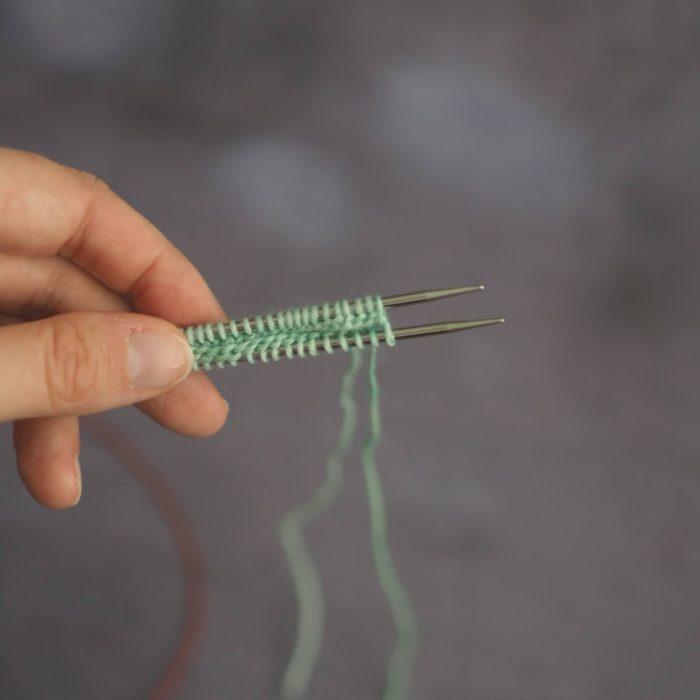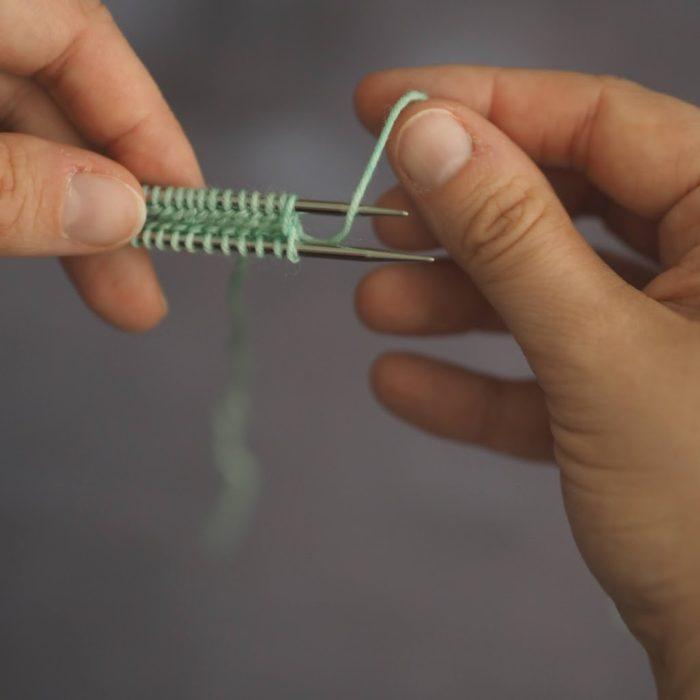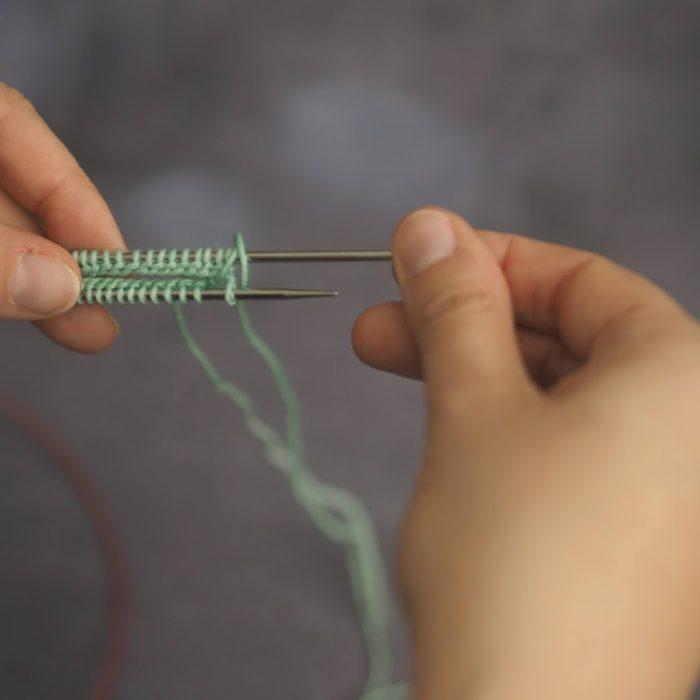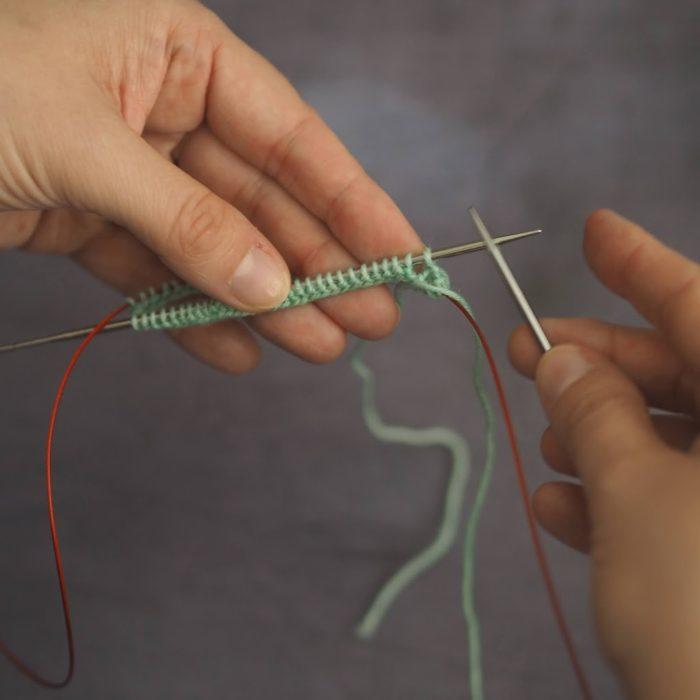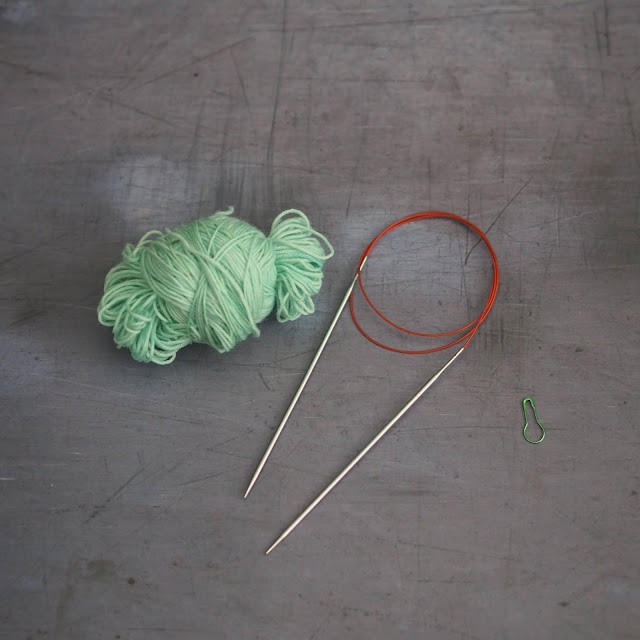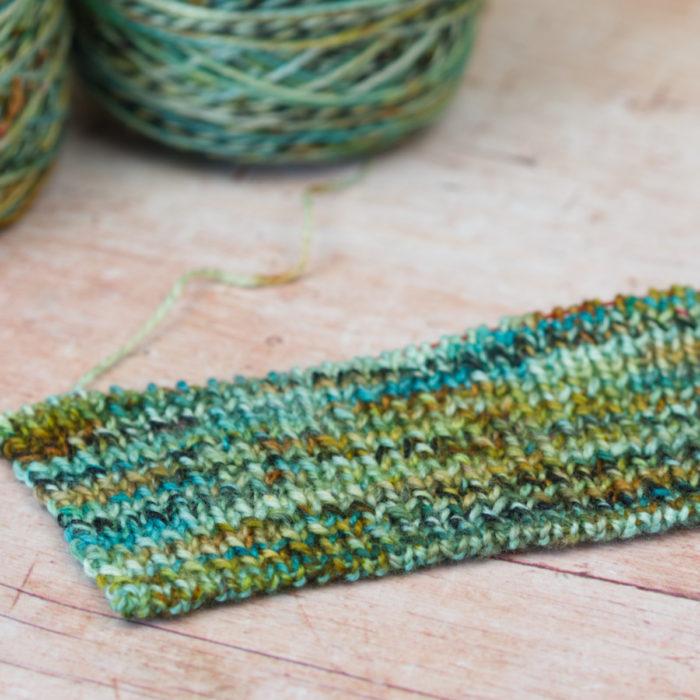There are many different techniques for working in the round. One of my favourite techniques is magic loop.
Benefits
- Less joins than DPNs, so less ladders
- Ladders are less likely to happen
- The needles are attached to each other, so you can’t lose one down the side of a train seat! You just need to ask my friend, Julie, about that one!
- If the stitch count changes, then nothing needs to change with the needles. Unlike using small circulars or DPNs
- As the stitches are split in half, this lends itself particularly well to socks, mitts etc. For example, the heel stays on one half and the instep stitches on the other, none of the stitches need to be put on holders or moved about
- For the same reason, you don’t need to use as many stitch markers as the ends of the needles mark the natural halfway points
- Just move the knitting onto the cables and there’s no chance of losing any stitches when it’s in your bag
- You don’t get DPNs stuck up your sleeve!
Downsides
- Can take a bit of time to get the hang of it
- More joins than using a 9″ circular
- Have to move the needles every half round
- Can take a bit of practice to get the tension even at the joins
My preference for learning a technique is photo tutorials but I know a lot of you like a video. So I’ve done both. Here’s the YouTube video on how to cast on for magic loop with lots of hints and tips along the way.
And for those that prefer a photo tutorial.
Materials needed: a circular needle 50/60cm longer than circumference of knitting. For socks, use 80cm [32″] circular needle. My needle brand preference is the Chiaogoo Mini Twist Interchangeables because the wire is very fine with no memory and the tips are a pleasure to work with.
Magic Loop Set-Up
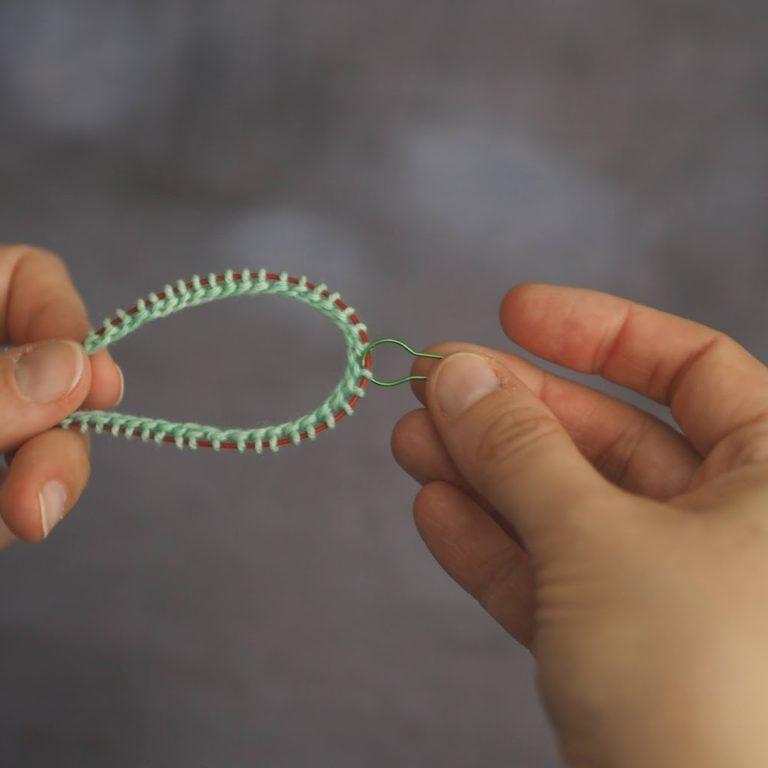
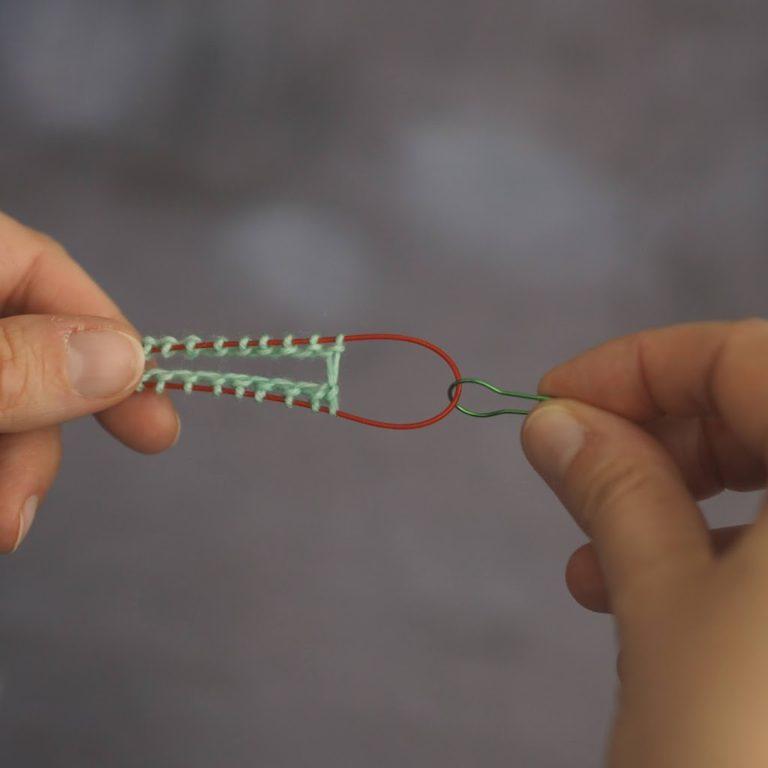

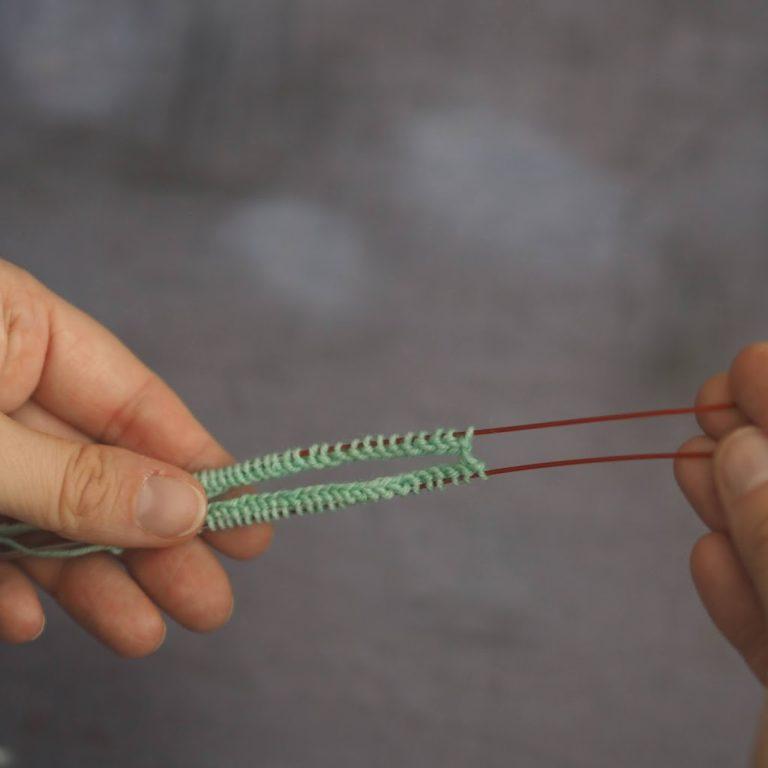
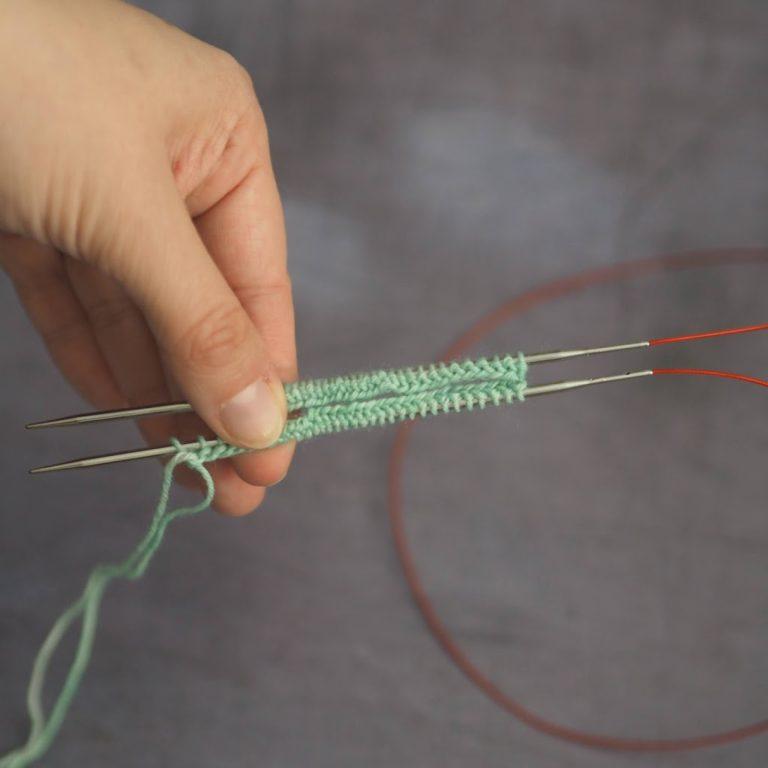
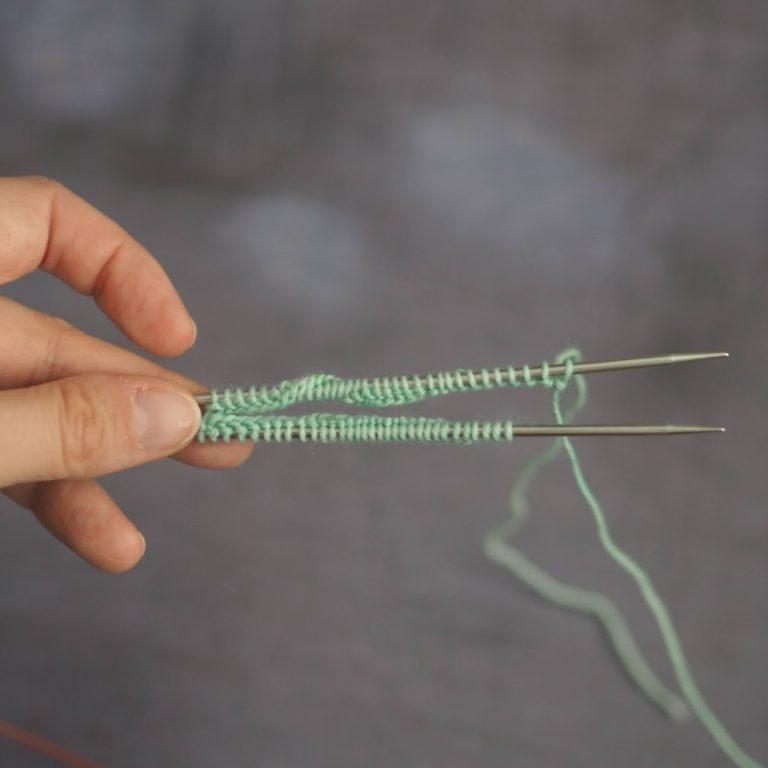
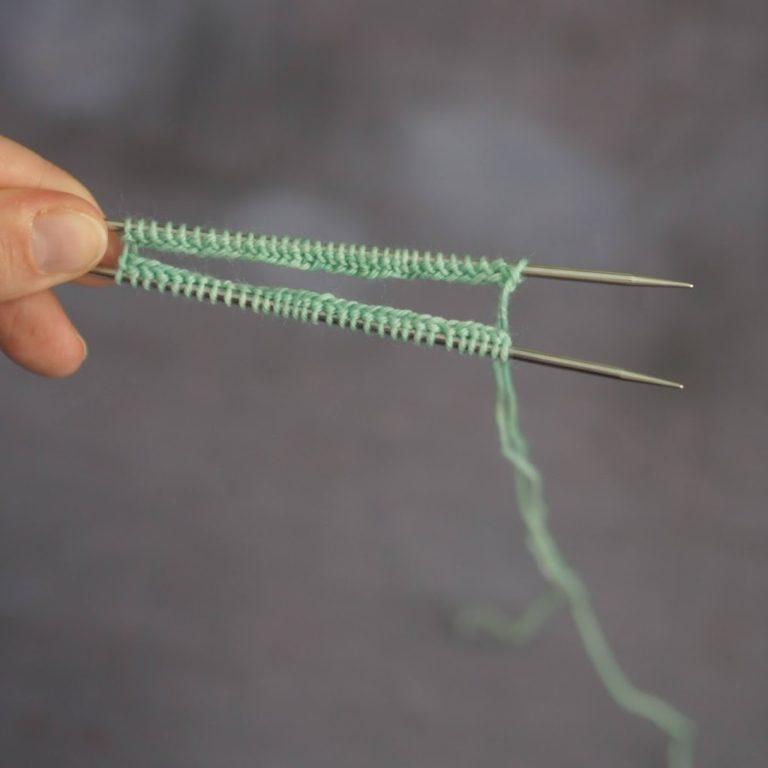
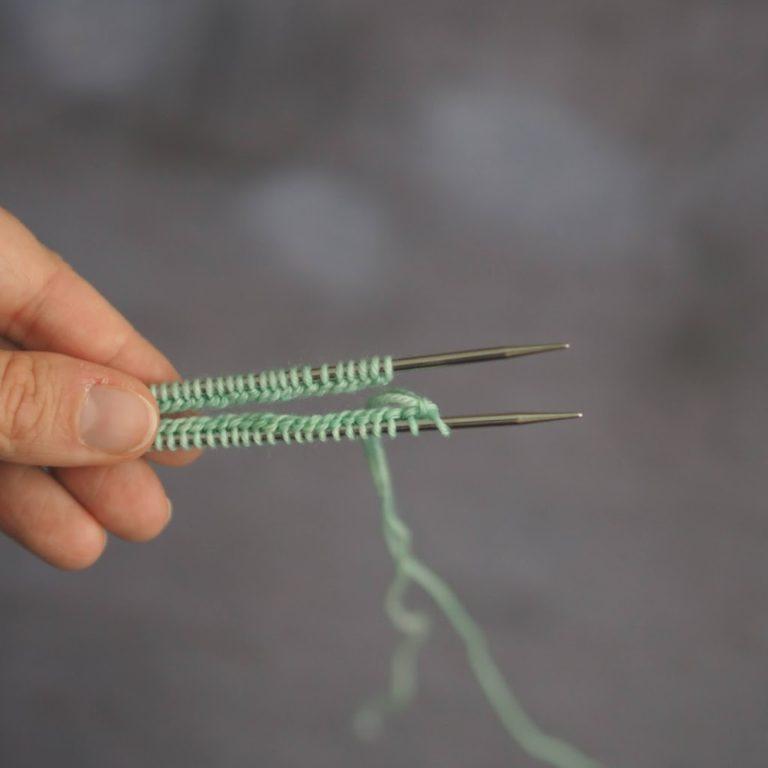
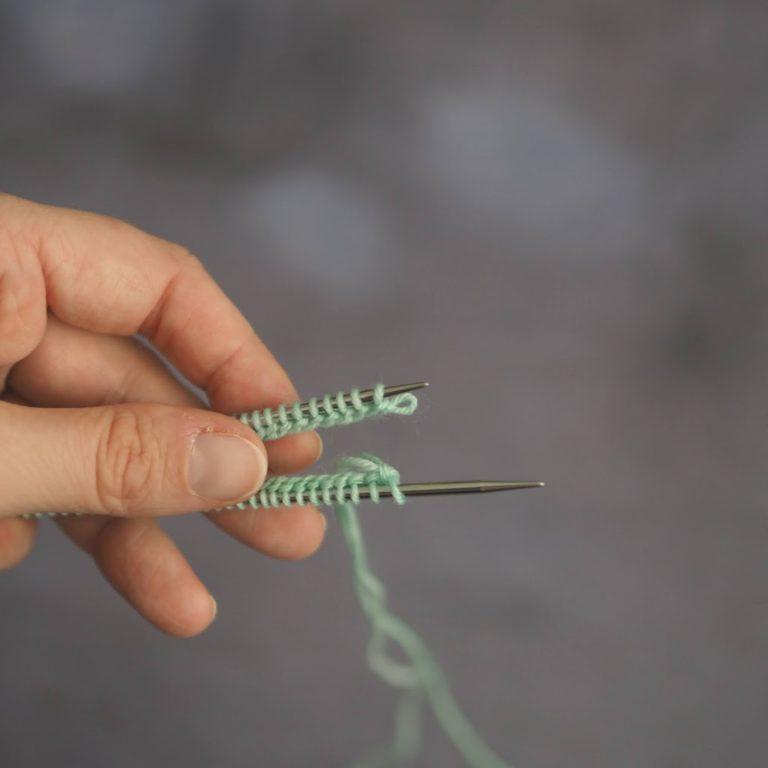
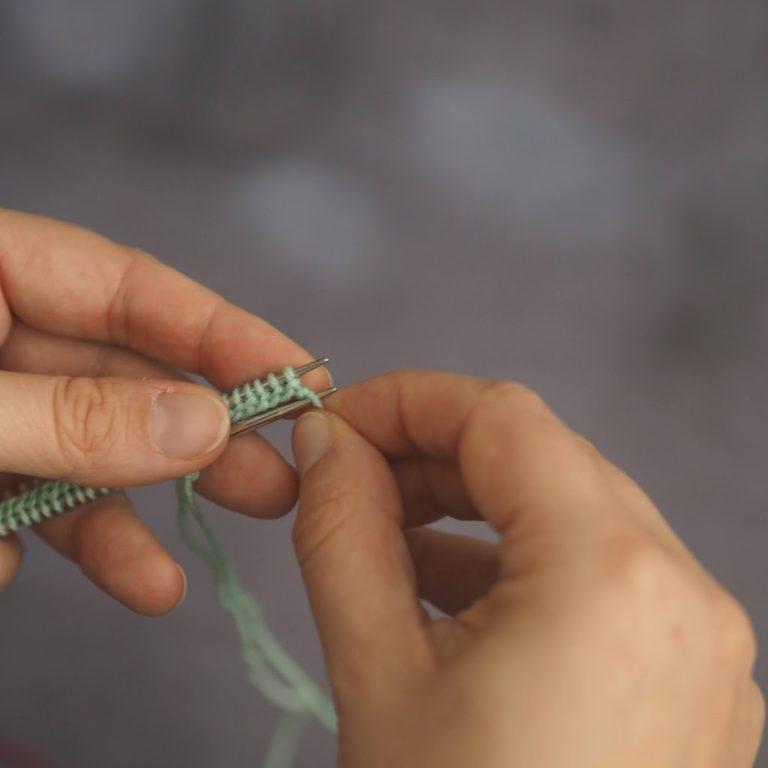
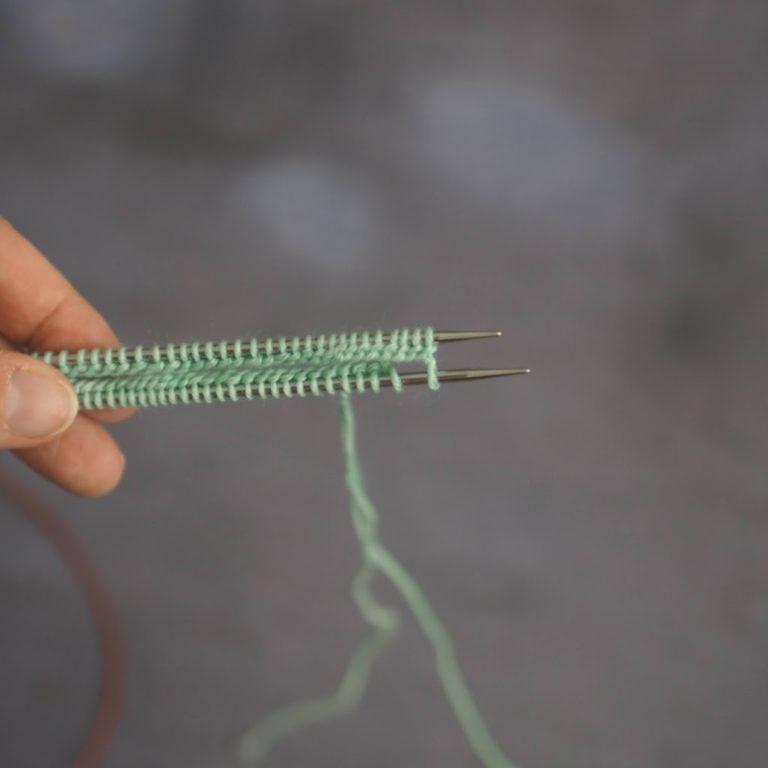
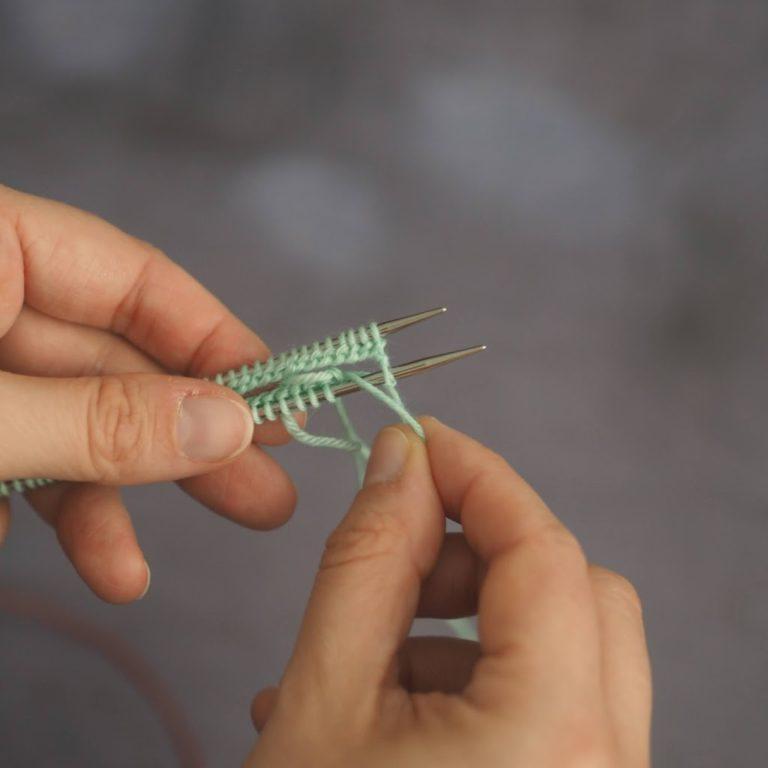
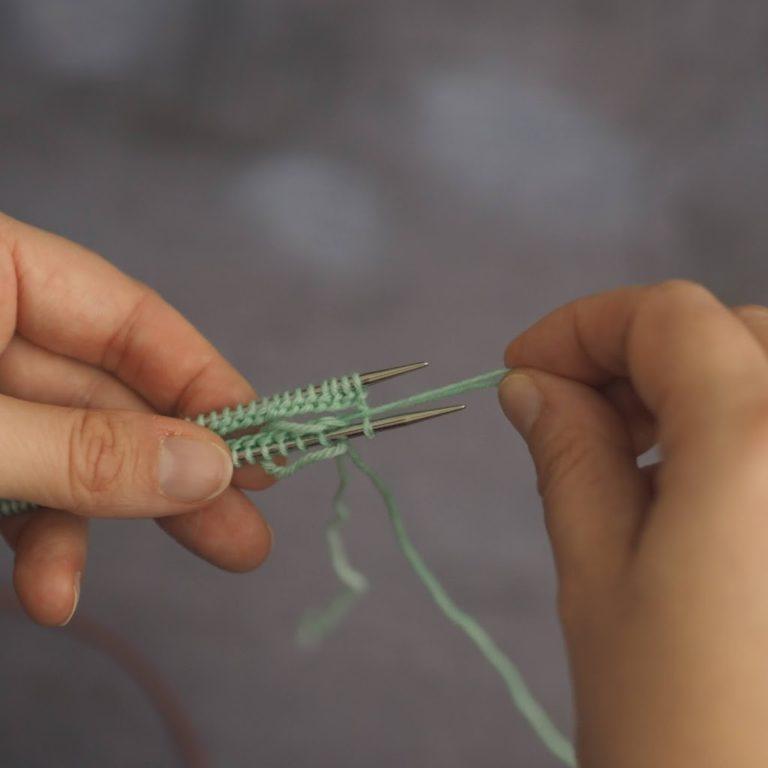
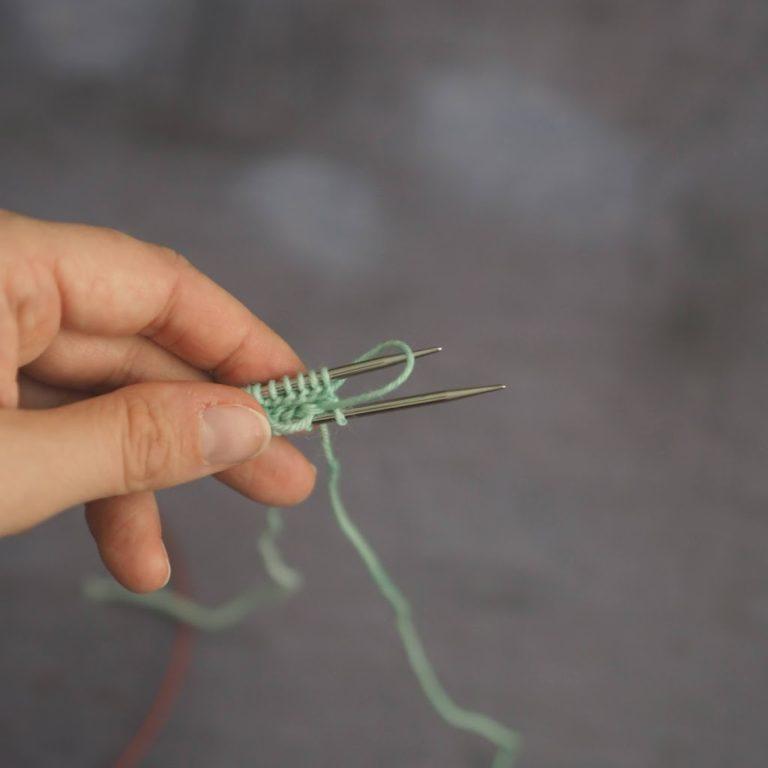
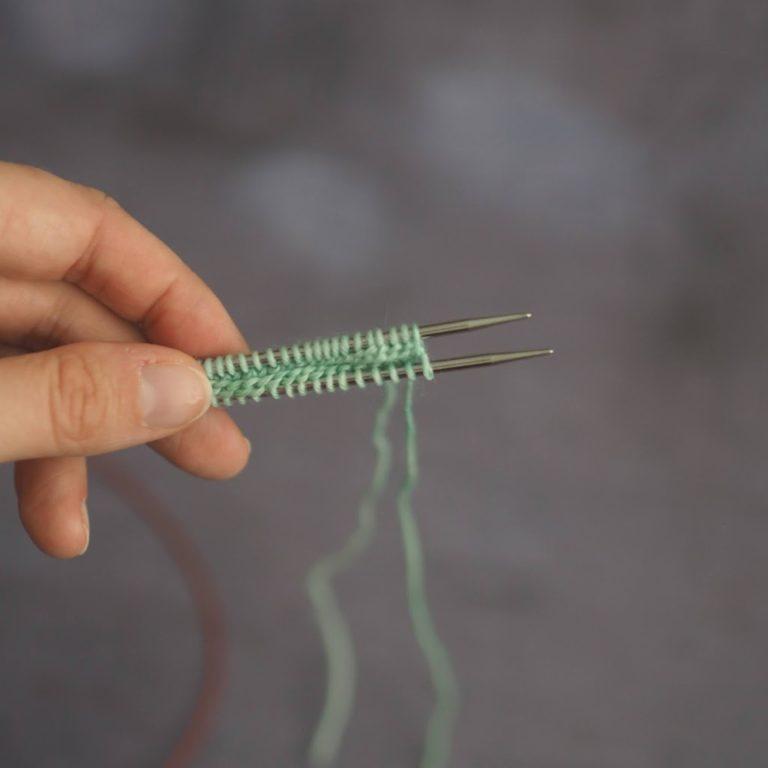
Every time you have an empty needle (including the first time)
